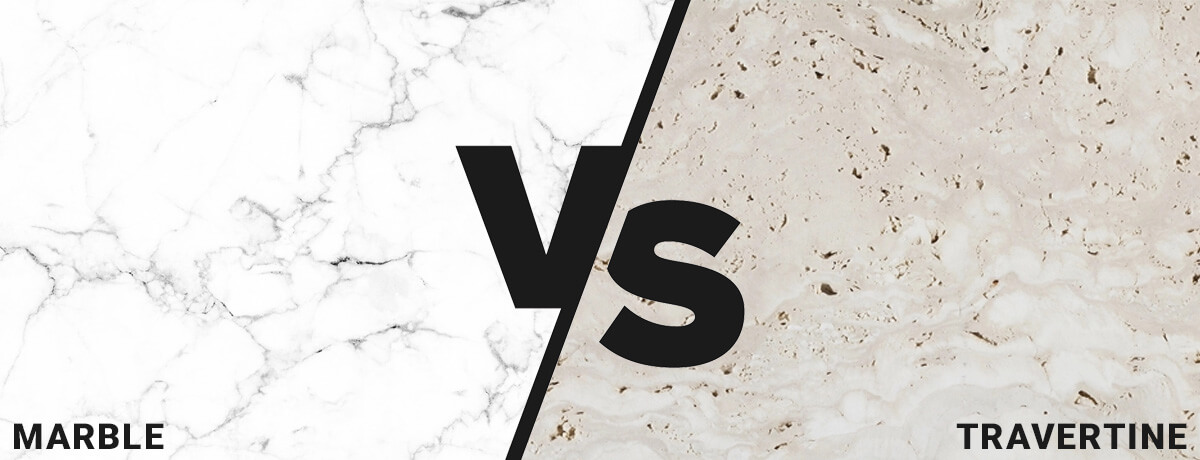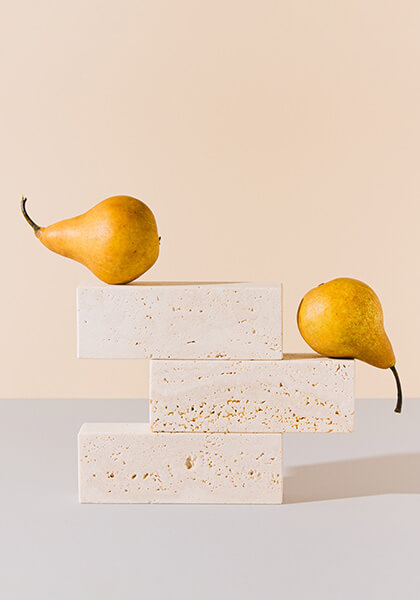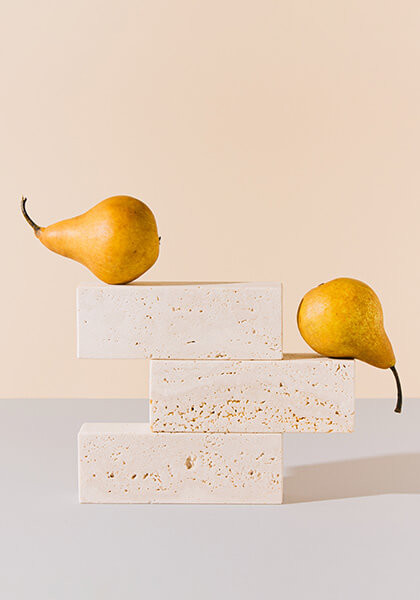Travertine vs. Marble: What's the Difference and Which is the Best Fit for Your Project?
26th Jul 2021

People often confuse travertine and marble. In fact, many people think that travertine is marble or that marble is a fancier word for travertine, but this is not the case. The two are different stones created in unique environments giving them their specific properties, look and feel.
What's the difference between travertine and marble?
The key difference between the stones is the way they are formed. When limestone comes under high temperature and pressure, marble is formed.
Travertine, on the other hand, is created in hot springs and limestone caves. Travertine has very distinctive telltale characteristics, created by the rapid precipitation of calcium carbonate during the formation process.

Travertine vs. marble - which is better for your project?
Although travertine and marble come from the limestone family, they have a unique character, making them suitable for different projects. Either of those stones can be the perfect choice to add charm, elegance, and style to your home or business. Still, you should know the properties of each so that you can make a sound and informed choice.
Here are the five major differences between marble and travertine that will help you determine which stone is a better fit for your project.
1) Appearance
Marble comes in a variety of colors, from cool blue to golden to beige to even black. A unique characteristic that the marble has is the veining. Some (rare) marble, however, can come in one color with minimum veining.
On the other hand, travertine comes in white cream, soft beige (the warm earth tones and its variations) and sometimes in a beautiful and rare grey. It's a personal choice of which color palette you like the most or fits better for your project. Still, travertine is perceived as the most elegant and class-adding stone.
Care should be taken for both stones, as both are porous and can stain if some dark liquid is spilled and not wiped up. However, both stones can be sealed, which will make them more resistant to stains.
2) Usage
When it comes to travertine vs. marble, the location you want to install your stone will dictate what type of stone will be more suitable. Travertine is a porous stone that can be sealed or not depending on if you want a natural feel or give a more polished finish.
Marble, on the other hand, should always be sealed. Furthermore, travertine can be made slip resistant and therefore, if you have a location outside, like driveways or a pool area, travertine is a better choice than delicate marble. Marble is not suitable for outdoor usage as it will scratch and is slippery.
Most people use marble inside their house or business, while travertine has a broader usage, and you can install it both inside and outside.
3) Durability
Travertine and marble are very hard stones and can withstand everyday use. Both can be cut into a variety of shapes and sizes. They both can also be honed and polished into a gorgeous shine. Being natural stones formed over hundreds of thousands of years, they both pass the test of time.
Travertine and marble are formed with heat and pressure, so they can withstand everyday wear and tear in the kitchen and bathroom. The better the quality of the travertine, the harder it is and the less it will scratch.
Both stones might need some treatment over time, but not surprisingly, the travertine is the most durable of the two. Although both stones are porous, travertine is more porous than marble and can be used without the need of being sealed outdoors. Even though both stones last a long time, travertine increases appeal and charm over time even without treatment (especially outdoors) whilst marble needs constant treatment to maintain its appeal.
4) Processing
Marble is harder, yet more fragile. There is very little variety of finishes that can be applied to marble. As a consequence marble is only used in specific settings. Also, to prevent breakages, at the back of the tile, a special treatment is used. These factors add up to the higher processing costs and limited possibilities.
Travertine, on the other hand, is softer, and processing it is easier. This gives a great variety of travertine tiles (honed, polished, tumbled, brushed, sand blasted, etc.). Moreover, travertine can also be filled when needed for things like kitchen benchtops. Marble, on the other hand, only comes in the honed or polished finish. So, if variety is what you are looking for, then travertine should be your choice.
5) Cost
The cost of both stones varies greatly depending on the quality and rarity. Some rare marble can cost $150 or more per sq. ft. On the other hand, travertine usually costs less than marble because it's easier to cut, reducing the overall end cost.
On the other hand, natural travertine can have a higher price than cultured marble, but natural marble will always have a greater price tag because of the higher processing costs.
Also, you should have in mind that marble should always be sealed, which adds up to the overall cost.
The bottom line
Overall, marble is much more expensive than travertine. You can only use marble indoors, while with travertine, you have the freedom to add some elegant charm to your outdoors, too. While marble has a diverse color palette, the dexterity of travertine with its classic, luxurious, and warm colors are way preferable if you want to add some prestigious touch to your home or business.
Each stone has its feel and look, and it's suitable for different tastes and applications. Still, travertine tiles offer broader finish choices, making it suitable for every project.
So, if you don't want to break the bank yet add luxury and prestige to your project, travertine is an excellent alternative to marble. When installed and maintained properly, travertine not only looks beautiful but can last a lifetime and add a unique, elegant touch to your home or business.
You can take a look at our travertine here, and if you have any questions, we are here to help you. Just send us a message here.

